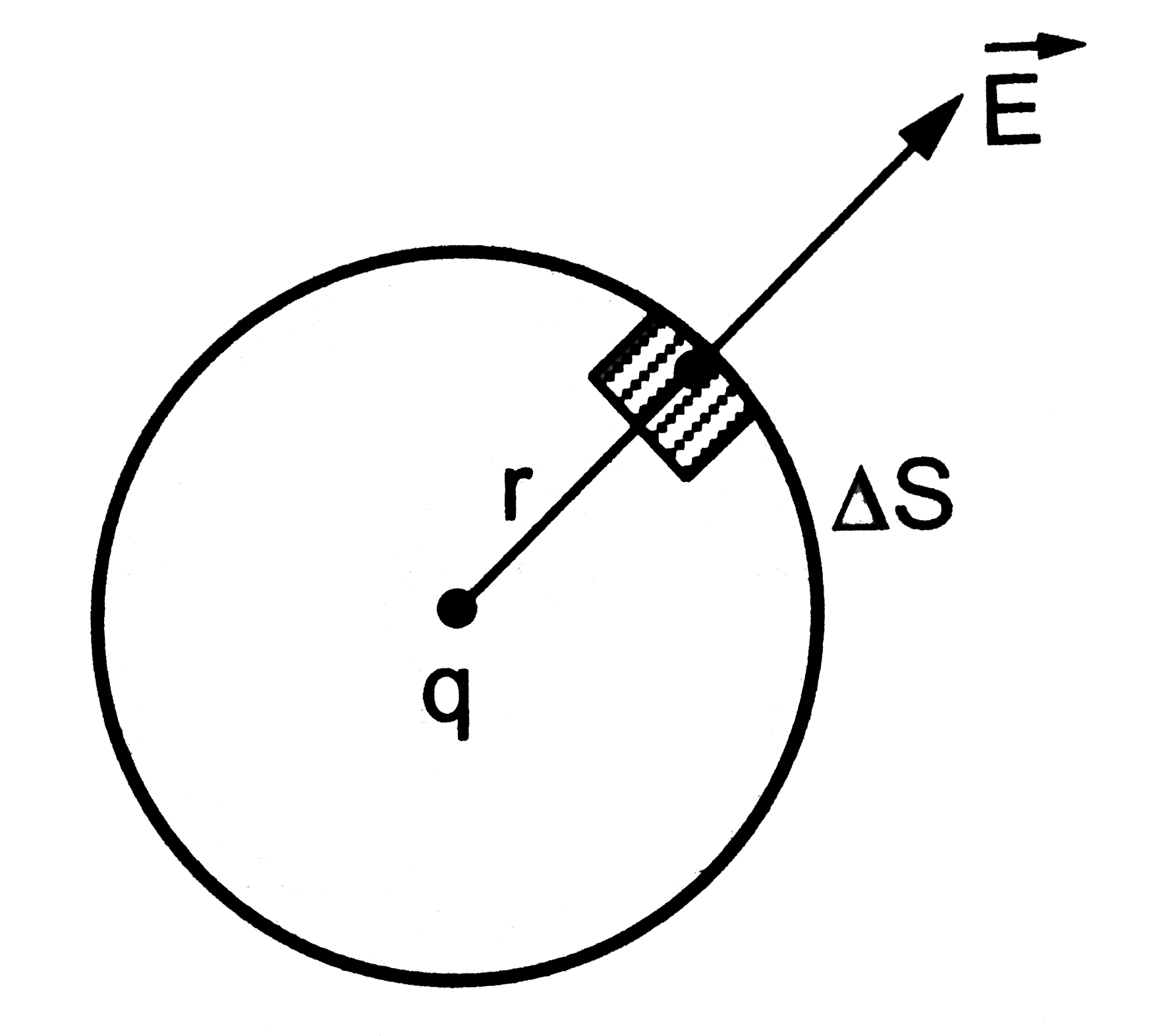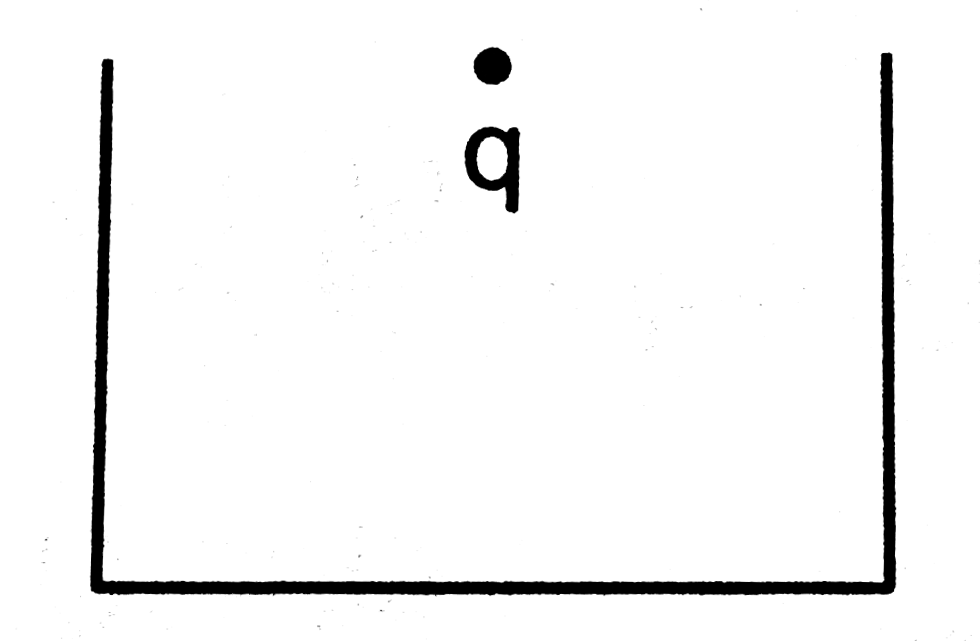A charge q is placed st the centre of a spher. Taking outward normal as positive, find the flux of the electric field through the surface of the sphere due to the enclosed charge.Solution in Tamil
Let us take a small element on the surface of the sphere (Figure 30.3(. The electric field here is radially outward and the magnitude.
where r is the rasius of the sphere. As the positive normal is also outward, and the flux though this part is
DeltaSPhi=sumDeltaPhi=q/4Piepsilon_0r^2 sum DeltaS=q/4phir^1.

Topper's Solved these Questions
- BOOK - HC VERMACHAPTER - GAUSS LAWEXERCISE - Work Out Exaples8videos
GAUSS LAW
- BOOK - HC VERMACHAPTER - GAUSS LAWEXERCISE - Short Question7videos
GAUSS LAW
- BOOK - HC VERMACHAPTER - ELECTROMAGNETIC WAVESEXERCISE - Exercise9videos
ELECTROMAGNETIC WAVES
- BOOK - HC VERMACHAPTER - GEOMETRICAL OPTICSEXERCISE - Exercises79videos
GEOMETRICAL OPTICS
Similar Questions
A uniform electric field of magnitude E=100NC−1 exists in the space in x-direction. Calculate the flux of this field through a plane square of edga 10 cm placed in the y-z plane. Take the normal along the positive x-axis to be positive.
03:06View SolutionA small plane area is rotated in an electric field. In which orientation of the area is the flux of electric field through the area maximum? In which orientation is it zero.?
03:34View SolutionShow that the dimensions of the displacement current (ε0dΦEdt) are that of an electric current.
03:29View SolutionA concave mirror having a radius of curvature 40 cm is placed in front of an illuminated point source at a distance of 30 cm from it. Find the location of the image.
04:10View SolutionA charge q is placed at the centre of the open end of a cylindrical vessel . The flux of the electric field through the surface of the vessel is
 02:41View Solution
02:41View SolutionA charge Q is placed at the centre of a cub. Find the flux of the electric field through the six surfaced of the cube.
01:52View SolutionA charge Q is enclosed by a spherical Gaussian surface of radius R. If the radius of the sphere is double, how will the outward electric flux charge ? If a charge −Q is brought outside the Gaussian surface, will the electric flux reduce to zero ?
View SolutionA charge 'Q' is placed at the centre of a hemispherical surface of radius 'R'. The flux of electric field due to charge 'Q' through the surface of hemisphere is
01:53View SolutionA charge q is placed at the centre of an imaginary spherical surface. What will be the electric flux due to this charge through any half of the sphere.
01:44View SolutionAn electric dipole is placed inside a sphere. The centre of dipole is not at the centre of sphere, but the dipole is completely enclosed within the sphere . Calculate total flux through the spherical surface Q is one of the charges and l is distance between charges of dipole.
View SolutionA charge q is placed at the centre of a hollow sphere of radius r, Total electric flux passing through the spherical surface is __________
01:04View SolutionA charge q is placed at the centre of the open end of a cylindrical vessel . The flux of the electric field through the surface of the vessel is
 View Solution
View SolutionA charge Q is placed at the centre of a cube. Find the flux of the electric field through the six surfaced of the cube.
02:08View SolutionA charge q is placed at the centre of the open end of cylindrical vessel. Find the flux of the electric field through the surface of the vessel.
01:20View SolutionA charge Q is enclosed by a Gaussian surface. If surface area is doubled and charge Q is tripled then the outward electric flux will
03:06View SolutionA charge q is placed at the centre of the open end of cylindrical vessel. Find the flux of the electric field through the surface of the vessel.
03:45View Solution

